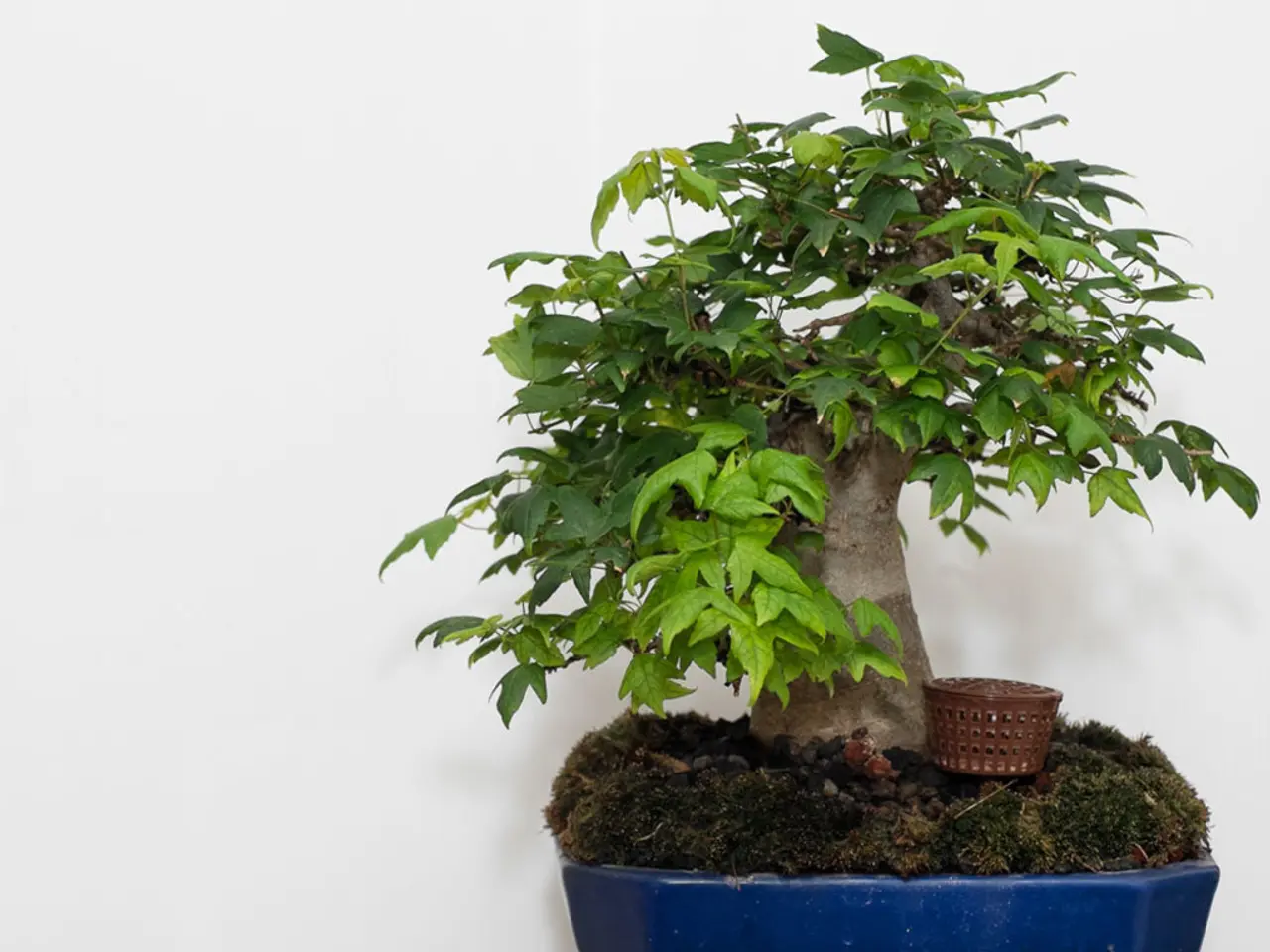Choosing the Ideal Spot for Nurturing Your Bonsai: A Guide
Indoor bonsai trees can thrive in the colder months, providing a touch of nature indoors. However, their care requires careful consideration of light, humidity, temperature, and air flow to ensure their health and growth.
Most bonsai trees are happiest outdoors, especially those suited to the local environment. During winter, some bonsai trees may need to be moved indoors when temperatures dip into the low 40s. It's essential to avoid placing them near radiators, ledges, or window sills near heat sources, as bonsai do not do well with concentrated heat.
In dry indoor climates, tropical species like Ginseng Ficus prefer higher humidity. In such cases, humidity trays or misting can help maintain moisture around the tree. For those living in harsher winter climates, bonsai trees should be stored in an enclosed but cool space like a garden shed, grow house, or garage.
The best place for a bonsai to grow indoors is somewhere with decent air flow; this can be supplemented by a revolving fan if needed. A well-lit, south-facing window is the best option for placing indoor bonsai trees for ample sunlight.
Most indoor bonsai thrive with 5 to 8 hours of bright, indirect sunlight daily. A south-, east-, or west-facing window is ideal to provide abundant but filtered light without harsh midday sun. If natural light is insufficient, especially for tropical species like Ginseng Ficus, grow lights can supplement. Avoid full shade or deep shadows, which stunt growth.
The table below summarises the ideal indoor location factors for various bonsai species types:
| Species Type | Light | Humidity | Temperature | Air Flow | Best Location Example | |-------------------|----------------------------|-------------------|----------------------|------------------------------|------------------------------------------| | Tropical (e.g. Ginseng Ficus) | 6-8 hours bright indirect light or grow light | Prefers high humidity; tolerate some dryness | Warm, >60°F (15°C), stable | Good circulation, avoid drafts | Near east/south/west window, humidity tray | | Deciduous (e.g. Japanese Maple indoors) | 5-6 hours bright indirect light | Moderate | 18-24°C, cooler winter dormancy | Fresh but draft-free | East/west window with filtered sun | | Conifers (e.g. Juniper indoors) | 5-6 hours bright indirect light | Moderate | Stable room temps (18-24°C) | Fresh air but no direct drafts | Near south-facing window with filtered light |
Practical tips for caring for indoor bonsai include placing them near windows that provide bright but non-direct sunlight, such as east or west-facing windows. Use sheer curtains or light filtering to moderate strong sunlight, especially in summer. Increase indoor humidity by grouping plants, misting, or using trays with water and pebbles. Maintain a constant temperature with minimal drafts and avoid heaters or air conditioners directly blowing on the bonsai. Rotate bonsai occasionally for even light exposure and inspect for signs of stress like leaf drop or slowed growth.
By selecting a location that balances these factors and adjusting care according to the specific bonsai species, you can optimise indoor growth conditions successfully. Popular indoor-friendly bonsai trees include Ficus/Fig, Fukien Tea, Dwarf Umbrella, Chinese Elm, Jade, and Snow Rose. With proper care and attention, indoor bonsai can flourish and bring a touch of the outdoors into your home.
- While some bonsai trees are content indoors during colder months, most species thrive outdoors and are moved indoors when winter temperatures dip below 40°F.
- In dry indoor environments, tropical bonsai trees such as Ginseng Ficus require higher humidity, which can be maintained through the use of humidity trays or misting.
- For those living in colder climates, it's essential to store bonsai trees in an enclosed but cool space, like a garden shed, greenhouse, or garage, during the winter months.




